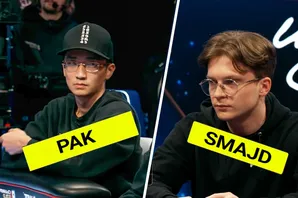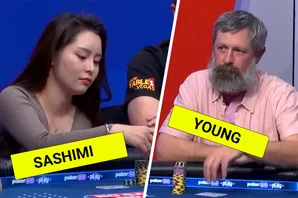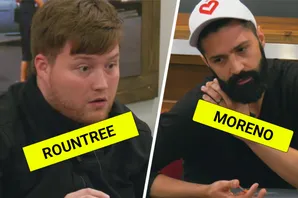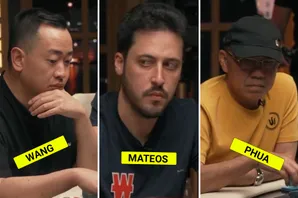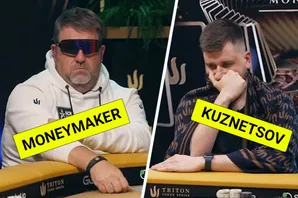Andrew Moreno is a professional poker player with 20+ years of experience. Andrew is a sought-after poker coach, as well as a member of the PokerOrg Player Advisory Board, and his primary focus is exploiting players in live tournament poker.
What I have for you guys today is just a little bit different. First, let’s look at the early days of Mixed Martial Arts. I don't know if you guys remember, but there was a lot of standing in the center of the ring and brawling. Brute force meets brute force. It made for some really spectacular fights.
MMA has evolved a lot over this since those days. If you try to stand in the center of the ring and just pound someone, they will just sit back. They're going to look for your weaknesses. Once they’ve keyed in on it, they will wait for their moment to attack.
Poker has followed the same trajectory. In the early days, you saw a lot of these three-bet, four-bet, five-bet, and even six-bet preflop hands.
There's even a famous hand with Phil Ivey, which is a flop play where Ivey five-bets all in with complete air against someone he correctly figured out was bluffing.
Back then, you used to see some hand histories that were pretty wild, fantastic, and made for great TV.
In poker today, there's a lot more of breaking down someone's game and being able to attack and defend from all angles.
A lot of players are still stuck in the past. They only know how to attack and defend one-dimensionally. That's just like standing there throwing a barrage of punches, like the old MMA days.
I want to share different ways to present problems to your opponents and potentially attack them in other ways.
The plan
If you only know how to bet and raise to win chips, you leave yourself open to skilled opponents picking you apart.
A well-constructed checking range is not only a good defense but can also prove to be a good offense if your opponent is too aggressive.
If we fail to think deeply about our checking range, we end up betting all of our strong and medium-strength hands, and our checking range becomes too weak.
This is a very common leak in weaker poker players. Because up against those players, we can overfold on the flop when they bet. Every time they check, now we can be aggressive.
It also creates big problems on dynamic boards where they end up betting too many value hands, and not enough speculative hands. When the board changes, these strong hands on the flop or turn become merely bluff-catchers.
A good exploit here would be to just call with your draws and a lot of your weaker pairs and then over-bluff when the board changes.
You mainly want to adopt this more passive strategy versus good, aggressive opponents; the weaker, more passive opponents, we can still just pound away.
Specific examples
Let’s look at an example versus a few different villain types where we open in the cutoff with 
The flop is Q-7-5 rainbow (OOP is meant to check a lot here in GTO land).
Versus the professional: A pro will be really sticky with any pair and even ace-high if they face a bet, making betting a bit tricky. Most professionals will tend to stab aggressively versus a missed continuation bet. They understand that the population has a really hard time not betting their good hands out of position. Playing our hand as a check/call or check/raise would be most effective.
I get that check/calling with such a weak hand feels unintuitive; however, versus a small bet, K-J just has enough equity vs. the range of hands the button will bet with.
It’s also nice to have a hand to bluff with if the button checks the turn. Most of our check/call range here will be showdown-heavy. Finding a bluff in our line will call for some hands of this nature.
Versus the passive weak/tight Villain: When up against a weak, passive player, we still like checking the flop mainly with many of our hands. The mark of passive players is they don’t like to bet, and they like to call. If the passive player bets the flop, we have an easy fold with K-J and many of our weakest holdings. If passive players show aggression, they aren’t bluffing enough, and we should overfold. They have made their checking range too weak, and now we can attack it.
When we attack the turn or river, typically, we would use some very large bets. This allows us to really leverage the fact they have ‘capped’ their range (i.e. removed the strongest hands).
In summary
Versus good players, we are looking for boring fights. Mainly, those battles should be boring and technical. (think 7-7 versus K-Qs and A-K versus T-T, etc.) Even when playing a strong technical game, the occasional knockout will happen (think all-in as a bluff and call by a weak hand with good bluff-catching properties).
Start with your baseline strategy. Pay close attention and gather as much information on your tablemates as possible.
Armed with that info, be eager to deviate from your baseline. A one-size-fits-all strategy won’t be enough to win in most poker games today.
Contact Andrew on his coaching site, Amo4sho.com, and follow him on IG and X.


























